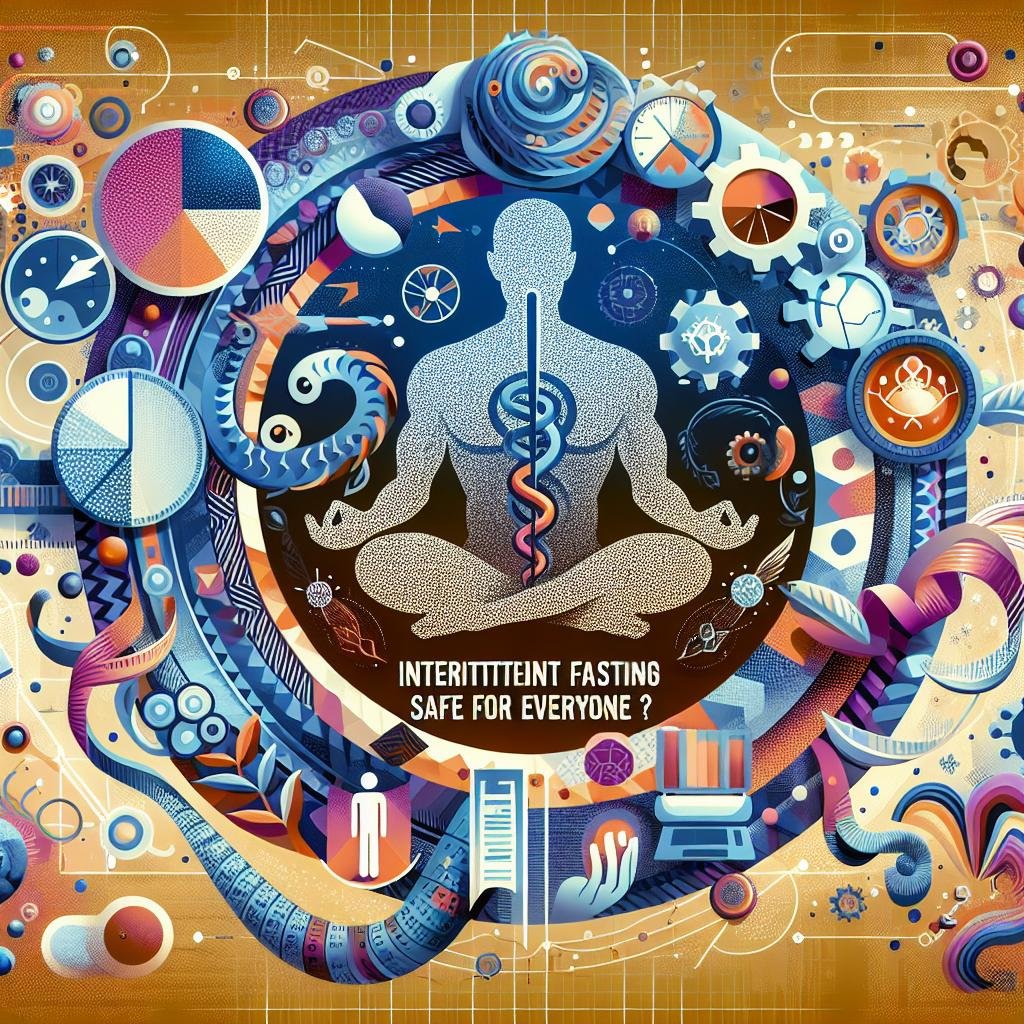In the ever-evolving landscape of nutrition and wellness, intermittent fasting has emerged as a buzzworthy topic, captivating the attention of health enthusiasts, fitness aficionados, and curious minds alike. With promises of weight loss, improved metabolism, and potential longevity benefits, this eating pattern has garnered widespread acclaim. Yet, beneath the surface of its popularity lies a complex web of considerations: Is intermittent fasting a one-size-fits-all solution, or can it pose risks for certain individuals? As we delve into the world of intermittent fasting, we aim to unravel its safety, exploring the nuances that inform whether this approach is suitable for everyone or if certain populations should tread carefully. Join us on this journey to uncover the insights, research, and expert opinions that will help illuminate the path toward informed dietary choices.
Understanding Intermittent Fasting and Its Mechanisms
Intermittent fasting (IF) is more than just a dietary trend; it represents a profound shift in how we approach food and nutrition. By alternating periods of eating and fasting, individuals can unlock a range of health benefits that extend beyond mere weight loss. During the fasting period, the body undergoes several metabolic changes, including an increase in insulin sensitivity and the promotion of cellular repair processes. Key mechanisms during fasting include:
- Enhanced Autophagy: This process helps in eliminating damaged cells and regenerating new ones.
- Hormonal Balance: Fasting can increase levels of norepinephrine and growth hormone, facilitating fat breakdown.
- Reduced Inflammation: Evidence suggests that fasting may lower markers of inflammation, contributing to improved overall health.
Different modalities of intermittent fasting can yield varying results, tailored to individual lifestyles and health conditions. Common approaches include the 16/8 method, where eating is restricted to an 8-hour window, and the 5:2 diet, which allows for normal eating five days a week but restricts caloric intake to about 500-600 calories on two non-consecutive days. It’s crucial to understand how these patterns affect the body’s biochemical pathways and overall well-being. Below is a simple comparison of some popular IF methods:
| Method | Description | Frequency |
|---|---|---|
| 16/8 | Fast for 16 hours, eat within 8 hours. | Daily |
| 5:2 | Normal eating five days a week, limit calories on two days. | Weekly |
| Eat-Stop-Eat | 24-hour fasts once or twice a week. | Weekly |

Identifying Who Can Safely Embrace This Eating Pattern
When considering intermittent fasting, it’s crucial to assess individual health circumstances. This eating pattern may work well for those who are generally healthy and looking to improve their overall wellness or manage their weight. Ideal candidates often include:
- Individuals with stable health, free from chronic conditions.
- People looking to enhance their metabolic health.
- Those who have a well-balanced relationship with food and understand hunger cues.
However, there are specific groups who should approach intermittent fasting with caution or consult a healthcare provider first. This includes:
- Individuals with a history of eating disorders.
- Pregnant or breastfeeding women.
- People with diabetes or other metabolic disorders who require regular food intake.
Creating awareness around who can benefit from this dietary approach can help prevent adverse effects. It’s essential to prioritize personal health and adapt any dietary strategy in alignment with one’s unique needs.

Potential Risks and Considerations for Vulnerable Populations
While intermittent fasting (IF) has gained popularity for its potential health benefits, it is important to recognize that certain groups may encounter unique risks when adopting this dietary approach. Vulnerable populations, such as pregnant or breastfeeding individuals, those with a history of eating disorders, and people with chronic health conditions, could face serious challenges. Consider the following considerations:
- Pregnant and Breastfeeding Women: Nutritional needs are elevated during pregnancy and lactation, making prolonged fasting potentially harmful.
- Individuals with Eating Disorders: IF might trigger unhealthy patterns, exacerbating conditions like anorexia or bulimia.
- Chronic Illness: Conditions such as diabetes require regular food intake to manage blood sugar levels effectively; fasting can lead to dangerous fluctuations.
Additionally, it is crucial to understand how fasting can affect mental health and cognitive function, especially in vulnerable individuals. Certain side effects, such as irritability, mood swings, and difficulty concentrating, may pose risks to those already navigating emotional or psychological challenges. The following table outlines potential psychological impacts:
| Impact | Description |
|---|---|
| Mood Swings | Fasting can cause fluctuations in mood, potentially affecting relationships and social interactions. |
| Stress and Anxiety | Some individuals may experience increased stress levels due to hunger or restrictive eating patterns. |
| Cognitive Function | Short-term fasting can impair attention and focus, particularly in sensitive populations. |

Expert Recommendations for a Personalized Approach to Fasting
Understanding that fasting is not a one-size-fits-all strategy is essential. Experts suggest considering various factors before embarking on an intermittent fasting journey. Here are a few personalized strategies that can help tailor the fasting experience to individual needs:
- Assess Your Health Status: Consult with healthcare providers to evaluate any medical conditions that might affect fasting eligibility.
- Set Realistic Goals: Define what you want to achieve through fasting—weight loss, improved metabolic health, or enhanced mental clarity—and align your approach accordingly.
- Choose the Right Fasting Method: Whether it’s 16/8, 5:2, or alternate-day fasting, select a method that fits your lifestyle and preferences.
Additionally, maintaining a balanced diet during eating windows is crucial. Experts recommend focusing on nutrient-dense foods and staying hydrated. Consider the following table for some ideal options to incorporate:
| Food Group | Examples | Benefits |
|---|---|---|
| Fruits | Blueberries, Apples | High in antioxidants, natural sugars. |
| Vegetables | Spinach, Broccoli | Rich in vitamins, low in calories. |
| Proteins | Chicken, Lentils | Supports muscle maintenance, satiety. |
To Conclude
the journey through the landscape of intermittent fasting reveals a tapestry woven with both potential benefits and individual considerations. While this dietary approach may offer promising avenues for weight management, metabolic health, and even cognitive clarity, it is crucial to remember that one size does not fit all. Each person’s body is a unique ecosystem influenced by genetics, lifestyle, and personal health circumstances. As you ponder the question of safety, engage in self-reflection and consider consulting a healthcare professional who understands your individual needs. Ultimately, the key to any successful dietary strategy lies in listening to your body, maintaining balance, and making informed choices that align with your goals. Whether you choose to embrace intermittent fasting or explore other paths, prioritize a well-rounded approach to health that fosters not only physical wellness but also mental and emotional resilience. Let your journey to health be as unique as you are.

